Consumers usually watch the total Thermal Design Power (TDP) when researching computer parts to assemble one. However, people new to computers might not know how to handle this aspect. Therefore, this article will focus on understanding TDP so that new consumers can effectively build their first gaming rigs.
Key Takeaways
- TDP isn’t used to determine the power draw but rather as a value to determine the heat dissipated by a processor or graphics card.
- Lithography, ambient temperatures, and how manufacturers calculate TDP value are a few factors that affect the TDP of a component.
- When looking at the TDP of graphics cards, there are two similar terms: Total Board Power (TBP) and Total Graphics Power (TGP).
- Lower TDP doesn’t always mean more efficiency. Testing components for their performance-per-watt value is essential before making a purchase.
What Is TDP?
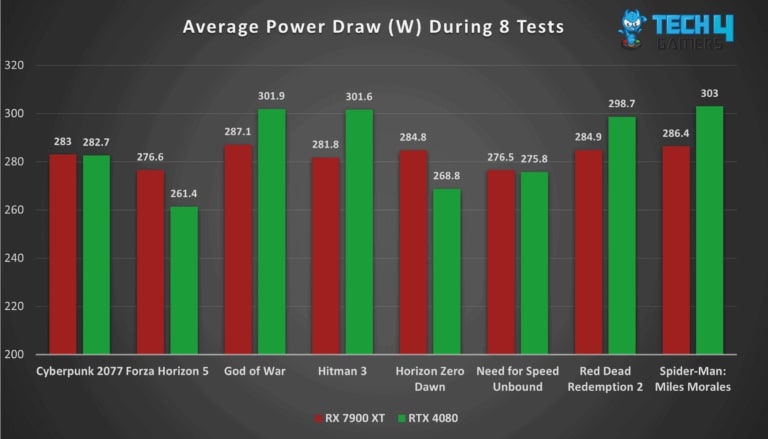
TDP is the total heat outputted by a CPU or GPU. By finding this value, we can understand the wattage required by a processor and a graphics card.[1] Although, TDP does not directly equate to the maximum wattage of a particular component.
For example, in the above image, the AMD Radeon RX 7900 XT’s highest wattage rating is 287.1W in God of War. But, the AMD Radeon RX 7900 XT’s listed TDP rating goes up to 300W. On the other hand, the NVIDIA GeForce RTX 4080’s highest wattage rating is 303W in Spider-Man: Miles Morales. Meanwhile, the listed TDP rating of the NVIDIA GeForce RTX 4080 goes to 320W.
How Is TDP Measured?

Thermal Design Power is measured in Watts (W), but Intel and AMD do it differently.[2] TDP measures the cooling a component requires and not its actual wattage limitations. Also, both the heat output and wattage are calculated using Watts.[3]
However, these are not different units that share the same name. Instead, they signify the same energy is being converted from thermal to electrical energy. So, the processor will always take more electrical power than thermal energy to function, which is why TDP values can be wrong.
While Intel calculates its TDP based on electrical energy, it only focuses on its base clocks. Therefore, whatever TDP values you find on Intel processors are miles apart from the actual wattage you’ll see.[4] Additionally, put on overclocking capabilities, and any resemblance to the original TDP goes down to dust.
On the other hand, AMD calculates its TDP based on thermal energy at the maximum boost clock. So, AMD processors showcase a more realistic approach than Intel, at least in terms of TDP. Furthermore, AMD has the formula to calculate the TDP, which is as follows:
TDP (Watts) = (tCase°C – tAmbient°C)/(HSF θca)
If you want to understand the formula more, Gamer’s Nexus has broken it down to understand it in more straightforward terms.
Factors That Affect TDP
TDP doesn’t accurately indicate heat output or total wattage required. However, understanding the factors mentioned below helps in grasping the concept of TDP.
Lithography
The lithography or process node significantly affects CPU and GPU TDP.[3] With Moore’s Law, transistor count increases while size and costs halve each generation.[5] Smaller nodes make CPUs more efficient by reducing data travel distance, thus lowering power consumption and heat output. Processors with smaller nodes are generally more potent with lower TDPs.
However, a higher TDP may indicate a more powerful but less efficient processor, as seen in Intel’s 13th-gen and AMD’s Ryzen 7000 series. See our Intel Core i7-13700K Vs. AMD Ryzen 9-7900X comparison for more details.
Ambient Temperatures

Another aspect affecting the TDP of a processor and graphics card is the room’s ambient temperature. Manufacturers create specialized test rooms for many variables when testing their products.
As a rule of thumb, AMD and Intel usually test their processors at an ambient temperature of 25°C. So, if your room is hotter, your TDP ratings will vary and be inaccurate to a certain degree. However, if your room is colder, it might benefit you due to the lower heat generated by the processor and graphics card.
Calculating TDP
We see AMD’s Robert Hallock state in a Reddit Post that “TDP is about thermal watts, not electrical watts.” If we examine the terms literally, “thermal” and “electrical” watts are the same unit. Similar to how one cup of coffee is the same as one cup of flour.
Because AMD and Intel calculate TDP differently and reach similar conclusions, they negate a few variables. For example, Intel negates its boost clocks completely, while AMD negates electrical energy as an output. So, it becomes difficult to wholeheartedly trust the TDP values written on the processor and cooler boxes.
Importance Of TDP In CPU And GPU
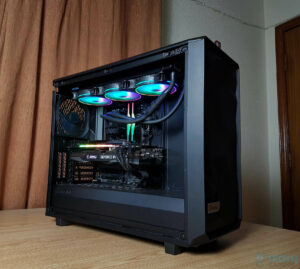
Knowing the TDP of a processor and graphics card helps determine their heat generation, power consumption, and the necessary power supply.[6] However, a higher TDP doesn’t necessarily mean better performance-per-watt. It’s crucial to consider if a component dissipates more heat than its performance justifies, potentially increasing TDP. Yet, higher TDP can also indicate better performance due to higher wattage limits.
TDP values help estimate cooling and power supply needs.[3] They also provide insight into the performance-per-watt ratio of processors and graphics cards based on game performance.
TDP As A Limiting Factor In Performance
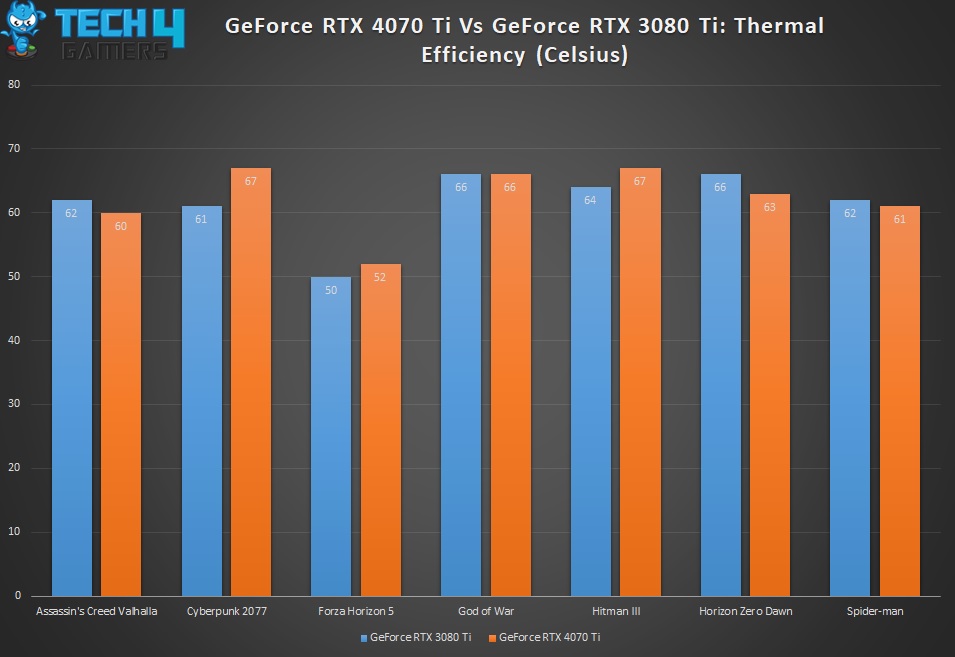
When handling TDP, manufacturers must achieve an ideal combination of performance, temperature, and power consumption. However, doing so can be a significant limiting factor in performance.
To explain, higher TDP might equate to more excellent performance. But, a higher TDP also equals higher temperatures and power consumption. So, the component may waste more energy than it utilizes. Additionally, in trying to balance the TDP, manufacturers may have to cut performance gains.
NVIDIA’s latest RTX 4000 series graphics cards consume over 130W power but provide more performance.[7] So, through various mixes and combinations, manufacturers need to adjust the power increments for their next-gen products.
TDP And Overclocking
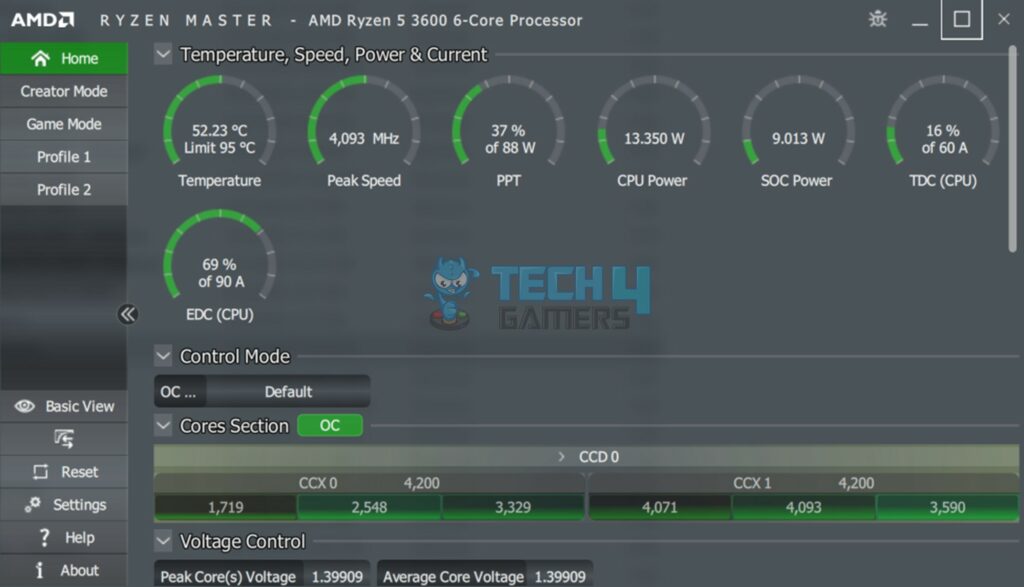
When discussing how TDP affects performance, we must examine how TDP and overclocking are related. To signify, overclocking requires a higher voltage output while keeping the temperatures low. So, if the stock temperatures of a processor or graphics card are high, it’ll not be easy to overclock. On the other hand, overclocking might be inefficient if the component provides less performance due to its stock voltage and TDP.[3]
Similar Terms For Graphics Cards
Processors rely on Thermal Design Power (TDP) to measure heat and power draw, while graphics cards use additional terms like:
Thermal Design Power
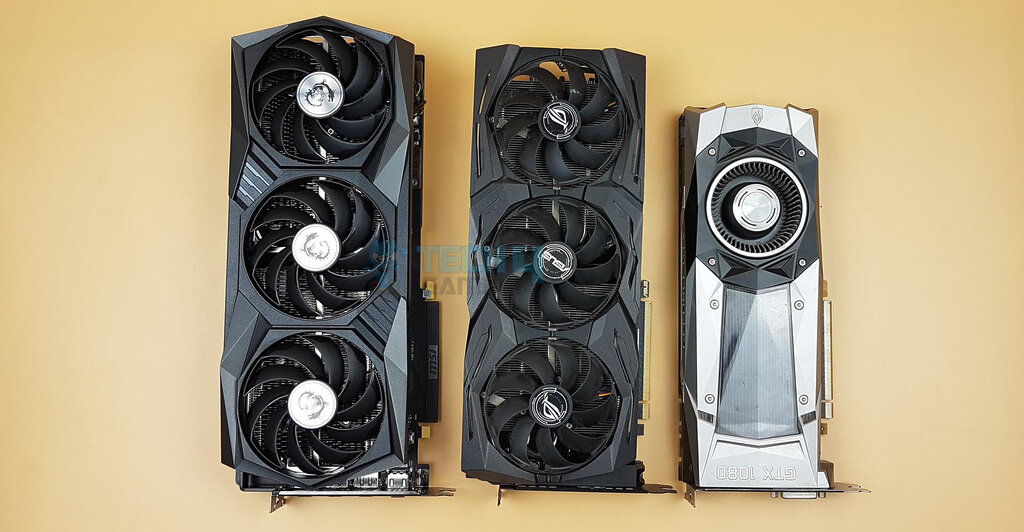
The latest NVIDIA and AMD graphics cards have seen more excellent power draw and performance gains. So, to keep the market leader spot, NVIDIA has opted to increase the TDP of its graphics cards as much as possible to ensure greater performance values. On the other hand, while AMD has also increased TDP ratings, they are more reasonable.
We use TDP values to determine graphics cards’ power draw and heat dissipation. We can identify the kind of PC cooling and power supply we require through these numbers.
Total Graphics Power
Moving on, unlike TDP, a graphics card’s Total Graphics Power (TGP) is a more specific value. The TGP of a graphics card is the total power consumption of its Printed Circuit Board (PCB) without any cooling and lighting effects.[8] So, unlike the TDP, a general value, the TGP is more reasonable and precise.
TGP values are essential because every Add-in Board (AIB) partner utilizes different cooling and lighting methods. Therefore, AIB partners use the same TGP values, as they don’t calculate the lighting and cooling elements. So, comparing various graphics cards, you will always see a separate TDP, TBP, and TGP value.
While the TGP of a graphics card will be the same, its Total Board Power (TBP) will always differ based on different AIBs. Thus, we see the same TGP values amongst various AIBs but slightly different TBP values.
Total Board Power

Unlike TGP, Total Board Power (TBP), while similar, is a slightly different term. Moreover, AMD uses TBP values more than NVIDIA does. To explain, TBP differs in only an essential element, where the graphics card’s total and peak consumptions are calculated. So, unlike TGP, which doesn’t calculate the cooling and lighting elements, the TBP calculates all of them.[9]
Therefore, the TBP of a graphics card is always slightly higher than its TGP, giving consumers a better idea of the total load and peak consumption. Furthermore, the VRMs, VRAMs, coils, capacitors, and other graphics card elements are considered when calculating the TBP values.
To conclude, when understanding the TDP of graphics cards, you must look at the TBP to know your graphics card’s total power draw.[8] But, if you only want to see the power draw of the GPU die, then checking the TDP value is enough. On the other hand, if you want to know the board power draw, you should check the TGP values.
Power Consumption Of Computer Components
If a consumer doesn’t have an average benchmark, they won’t be able to tell whether a particular component’s TDP is too high. Therefore, we’ll look at the power consumption of processors, graphics cards, RAM, and the CPU cooler.
Processors
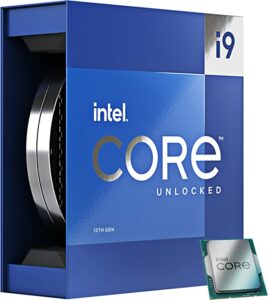
Most modern processors have a power consumption of between 65W and 100W. However, these numbers jump significantly if we move to the high-end Intel and AMD processors. For example, the AMD Ryzen 5-3600 processor consumes around 65W of power,[10] whereas the AMD Ryzen 9-7900X processor consumes around 175W of power.[11]
Similarly, the Intel Core i5-12600K consumes around 125 base and 150 turbo W of power in Intel processors.[12] The high-end Intel Core i9-13900K also consumes around 125W base and 253W turbo power.[13] So, most AMD processors consume less energy than Intel processors but might not offer the same level of performance.
Graphics Card
On average, a mid-range graphics card requires anywhere between 150W to 200W of power. In contrast, high-end graphics cards eat up more than 400W of power.
To explain, the NVIDIA GeForce RTX 3060 graphics card has an average power consumption of over 170W.[14] Meanwhile, the NVIDIA GeForce RTX 4080 graphics card uses around 320W power for gaming.[15]
On the other hand, the AMD Radeon RX 6600 XT consumes around 160W.[16] In contrast, the AMD Radeon RX 7900 XT consumes around 270W to 280W power for moderate gaming.
Purchasing a graphics card isn’t a simple task, but when hunting for one, remember to check its TDP, TGP, and TBP values. While lower power consumption and temperatures are good, ensure the performance-per-watt graphics card you choose is more significant.
RAM
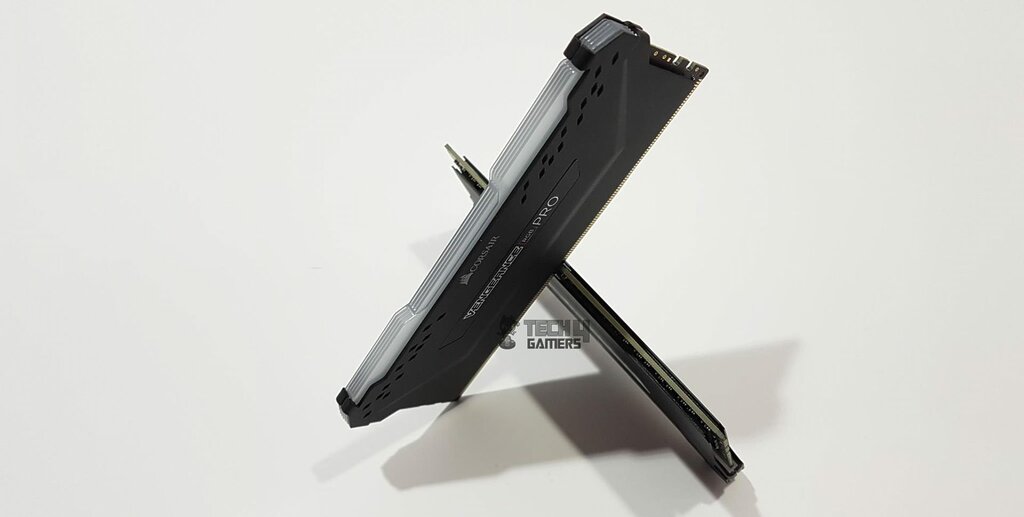
Although not as much as processors and graphics cards, RAM also consumes a slight amount of power. A modern DDR4 8GB RAM stick usually consumes 2 to 4W.[17] So, a 16GB DDR4 RAM kit can consume up to 6-8W of power.[18]
On the other hand, if we look at DDR5 RAM, due to the more incredible memory, DDR5 RAM kits have a slightly higher power consumption. While the numbers cannot be directly compared, they consume slightly more power due to DDR5 RAM being available in more quantities.
Furthermore, if you overclock your RAM past its XMP capabilities, it will consume even more power. Therefore, when purchasing RAM, ensure your power supply can handle the slight upgrade without pushing it.
CPU Cooler
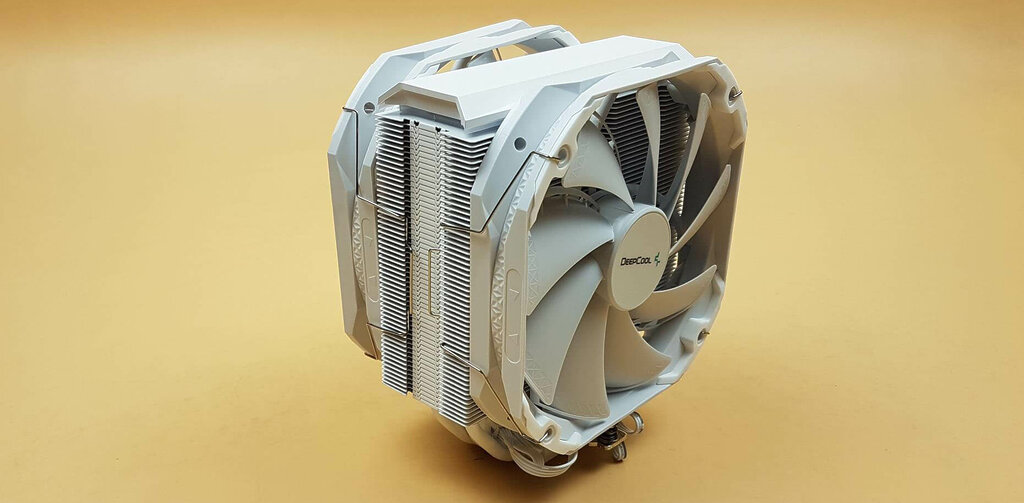
Most PCs use traditional air coolers because they do the job and aren’t heavy on the pocket. Moreover, air coolers don’t require much wattage and consume around 10W at best. For example, the Be Quiet Dark Rock Pro 4 only consumes 10W to 12W on average. On average, an air cooler can cool around 100W to 150W of heat.
All-in-one coolers are a step up from traditional air coolers as they have a water block attached to a radiator for the processor. AIO coolers don’t require much wattage but consume more than an average air cooler. For instance, the Corsair H150i Pro has an average consumption of 15W to 17W. Furthermore, AIOs can cool around 150W to 180W of heat.
You can make your PC as cool as possible through custom water loops. However, water looping isn’t simple and requires more power than AIOs or air coolers. To explain, a custom water loop can need around 20W to 25W of power. For example, the Raijintek Scylla Elite water cooling kit consumes 25W of power while cooling over 200W of heat.
Relationship Between TDP And Performance-Per-Watt
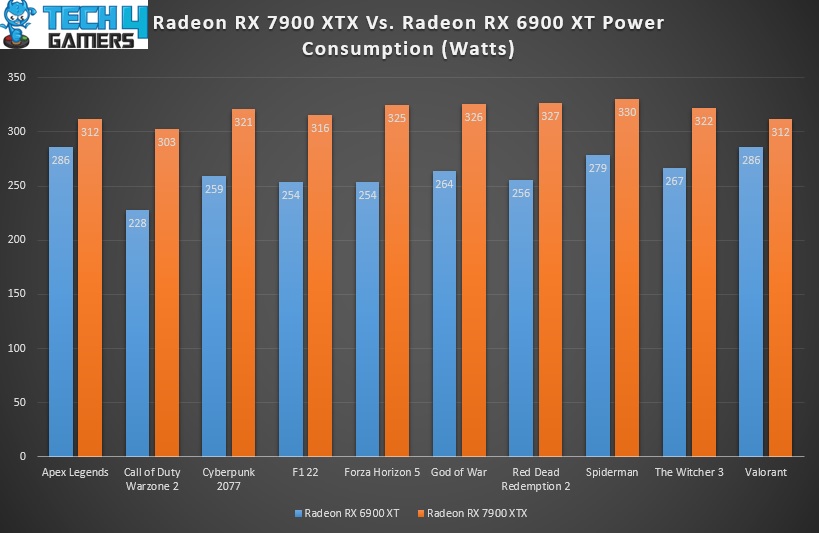
We have seen greater power consumption with AMD’s latest Radeon RX 7000 series graphics cards and NVIDIA’s latest GeForce RTX 4000 series graphics cards. These graphics cards have greater performance-per-watt values than their predecessors.
For example, looking at the above graph, we see a comparison between the AMD Radeon RX 6900 XT and AMD Radeon RX 7900 XTX graphics cards. On average, the AMD Radeon RX 6900 XT consumes 263W of power. In contrast, the AMD Radeon RX 7900 XTX consumes 319W of power.
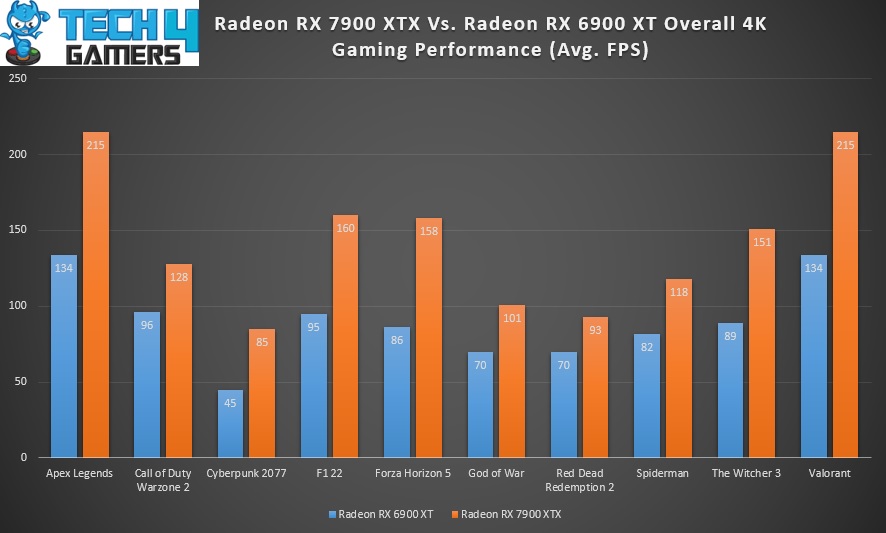
Now, from the above image, we see that the AMD Radeon RX 7900 XTX is massively faster than its predecessor. The AMD Radeon RX 7900 XTX averages 1,424 FPS throughout ten games. On the other hand, the AMD Radeon RX 6900 XT averages 901 FPS.
To find the performance-per-watt value of both graphics cards, we have to divide the average FPS by the average power consumption. Thus, the AMD Radeon RX 6900 XT has a performance-per-watt value of 3.4, while the AMD Radeon RX 7900 XTX has a performance-per-watt value 4.4.
So, by knowing the TDP value of both graphics cards, we found out which is more efficient. On the outside, the AMD Radeon RX 6900 XT seems more efficient. However, through testing, we found out otherwise.
Conclusion
When grasping TDP, remember it signifies heat dissipation rather than power draw for CPUs and graphics cards. Prioritize a higher performance-per-watt when selecting hardware to ensure better efficiency. To compare, calculate average FPS and power draw in various games and divide both numbers for precise performance-per-watt. Opt for the hardware with superior performance-per-watt if efficiency matters; otherwise, prioritize raw performance.
More Helpful Resources By Tech4Gamers:
- RX 7900 XT Vs. RTX 3080
- Best RTX 4090 Graphics Cards
- RX 7900 XTX Vs. RTX 4070 Ti
- 120mm Vs. 140mm Case Fans
- How Long Do Power Supplies Last?
- Does Overclocking Reduce CPU Lifespan?
- Power Usage Of Your PC
- How To Water-cool A GPU
- PC Building Mistakes To Avoid
- Best-Budget CPU Coolers
References:
-
-
- Department of Electrical and Computer Engineering, Auburn University. Technology Characterization Model and Scaling for Energy Management. Retrieved from https://www.eng.auburn.edu/~vagrawal/TALKS/VDAT19/Goyal_Agrawal_VDAT_2019.pdf
- OpenWrt. X86 mini-pc CPU power consumption. Retrieved from https://forum.openwrt.org/t/x86-mini-pc-cpu-power-consumption/128784
- Lenovo. What is thermal design power (TDP)? Retrieved from https://www.lenovo.com/us/en/glossary/what-is-thermal-design-power/?orgRef=https%253A%252F%252Fwww.google.com%252F
- arsTECHNICA. The technical details behind Intel’s 7-watt Ivy Bridge CPUs. Retrieved from https://arstechnica.com/gadgets/2013/01/the-technical-details-behind-intels-7-watt-ivy-bridge-cpus/
- Intel. Moore’s Law. Retrieved from https://www.intel.com/content/www/us/en/newsroom/resources/moores-law.html#gs.a019fn
- Springer Link. CPU Power Management. Retrieved from https://link.springer.com/chapter/10.1007/978-1-4302-6638-9_2
- nVIDIA. NVIDIA RTX 4000 Ada Generation Graphics Card. Retrieved from https://www.nvidia.com/en-us/design-visualization/rtx-4000/
- AMD Community. Differences Between TDP, TBP and TGP on a Graphics Card. Retrieved from https://community.amd.com/t5/general-discussions/fyi-only-differences-between-tdp-tbp-and-tgp-on-a-graphics-card/m-p/242552
- WIKIDATA. Total Board Power. Retrieved from https://www.wikidata.org/wiki/Q83886252
- AMD. AMD Ryzen™ 5 3600. Retrieved from https://www.amd.com/en/product/8456
- The guru of 3d. AMD Ryzen 9 7900X processor review. Retrieved from https://www.guru3d.com/review/amd-ryzen-9-7900x-processor-review/page-7/
- Intel. Intel® Core™ i5-12600K Processor. Retrieved from https://www.intel.com/content/www/us/en/products/sku/134589/intel-core-i512600k-processor-20m-cache-up-to-4-90-ghz/specifications.html
- Intel. Intel® Core™ i9-13900K Processor. Retrieved from https://www.intel.com/content/www/us/en/products/sku/230496/intel-core-i913900k-processor-36m-cache-up-to-5-80-ghz/specifications.html
- Tech Power Up. NVIDIA GeForce RTX 3060 12 GB. Retrieved from https://www.techpowerup.com/gpu-specs/geforce-rtx-3060-12-gb.c3682
- nVIDIA. A Deeper Look at Power Consumption: GeForce RTX 4080 Power Is About More Than TGP. Retrieved from https://www.nvidia.com/en-us/geforce/news/geforce-rtx-40-series-ultra-efficient-beyond-fast/
- AMD. AMD Radeon™ RX 6600 XT Graphics Card. Retrieved from https://www.amd.com/en/products/graphics/amd-radeon-rx-6600-xt
- Crucial. How Much Power Does Memory Use? Retrieved from https://www.crucial.com/support/articles-faq-memory/how-much-power-does-memory-use#:~:text=As%20a%20rule%20of%20thumb,of%20DDR3%20or%20DDR4%20memory
- Quora. How much wattage power supply is needed for a DDR4 dual channel 16GB RAM PC build? Retrieved from https://www.quora.com/How-much-wattage-power-supply-is-needed-for-a-DDR4-dual-channel-16GB-RAM-PC-build#:~:text=16%20GB%20DDR4%20RAM%20doesn,a%20550W%20SMPS%20is%20enough
Frequently Asked Questions
Does TDP matter when buying a CPU cooler?TDP can be a deciding cause when purchasing a CPU cooler. Using the TDP value of the CPU cooler and processor, you can determine whether the cooler can eliminate the amount of heat the processor will dissipate. If not, you must look for another cooler or use an AIO or a custom water loop.
What does 250W TDP mean?For processors and graphics cards, 250W TDP states the component’s theoretical value of heat it is expected to dissipate. However, in the case of a CPU cooler, 250W would mean that the cooler can eliminate at least 250W of heat.
Is higher or lower TDP better?The answer to this question depends on the specific component you’re buying and your requirements. While lower TDP means lower temperatures and less power draw, it can also mean fewer performance gains. While we have efficient processors and graphics cards, the latest-generation hardware has proved otherwise. As a rule of thumb, before making a purchase, test the hardware’s performance-per-watt values to determine if it is efficient for its TDP.
-
Thank you! Please share your positive feedback. 🔋
How could we improve this post? Please Help us. 😔
[Wiki Editor]
Ali Rashid Khan is an avid gamer, hardware enthusiast, photographer, and devoted litterateur with a period of experience spanning more than 14 years. Sporting a specialization with regards to the latest tech in flagship phones, gaming laptops, and top-of-the-line PCs, Ali is known for consistently presenting the most detailed objective perspective on all types of gaming products, ranging from the Best Motherboards, CPU Coolers, RAM kits, GPUs, and PSUs amongst numerous other peripherals. When he’s not busy writing, you’ll find Ali meddling with mechanical keyboards, indulging in vehicular racing, or professionally competing worldwide with fellow mind-sport athletes in Scrabble at an international level. Currently speaking, Ali has completed his A-Level GCEs with plans to go into either Allopathic Medicine or Business Studies, or who knows, perhaps a full-time dedicated technological journalist.
Get In Touch: alirashid@tech4gamers.com


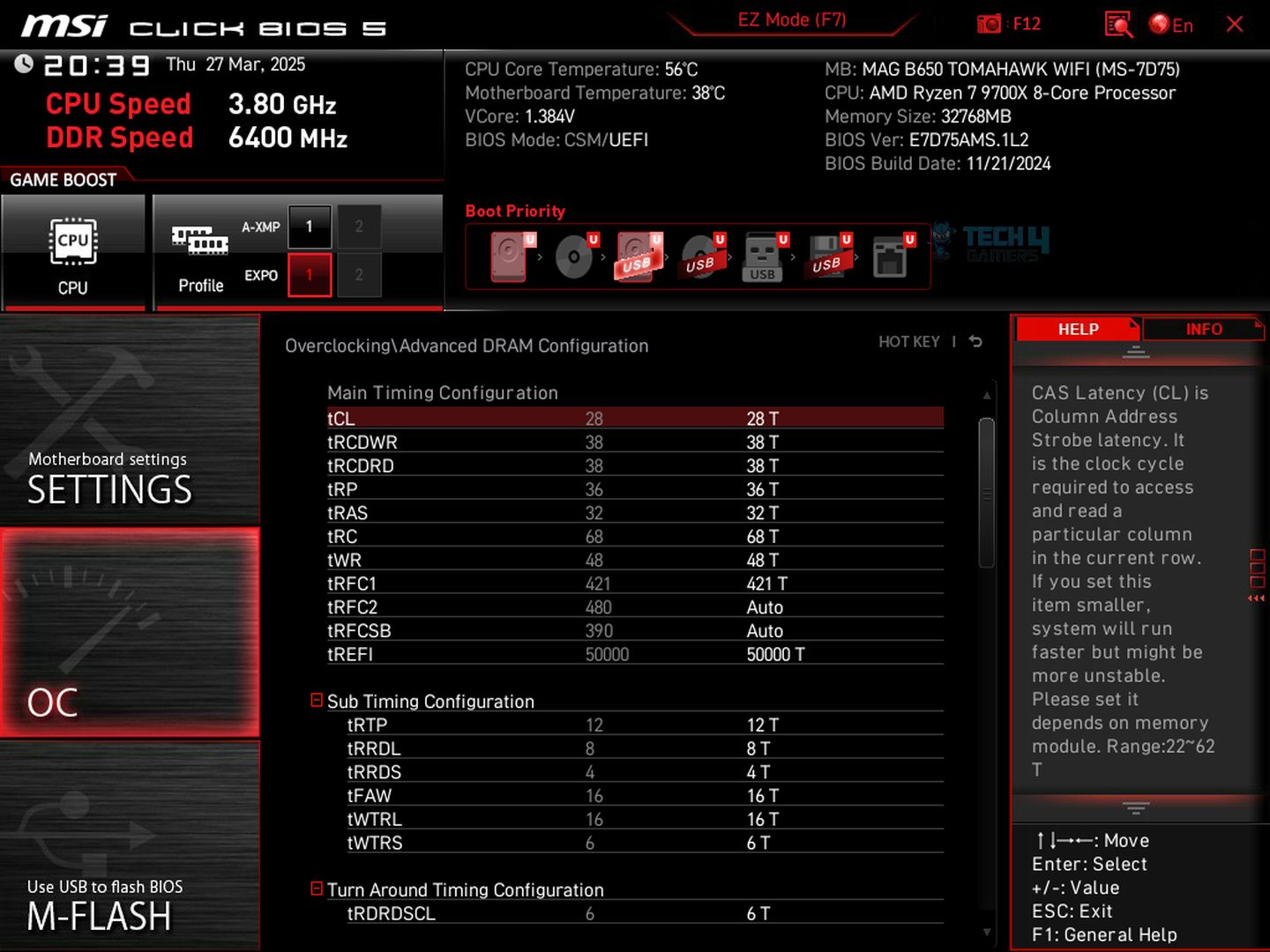

![AMD EXPO [Features & How You Can Enable It]](https://tech4gamers.com/wp-content/uploads/2024/08/CORSAIR-VENGEANCE-RGB-DDR5-RAM-32GB-2x16GB-6000MHz-CL30-AMD-EXPO-RGB-Lighting-3-218x150.jpg)
![Intel XMP [What, Why, & How] XMP Profile](https://tech4gamers.com/wp-content/uploads/2024/03/XMP-Profile-218x150.jpg)
